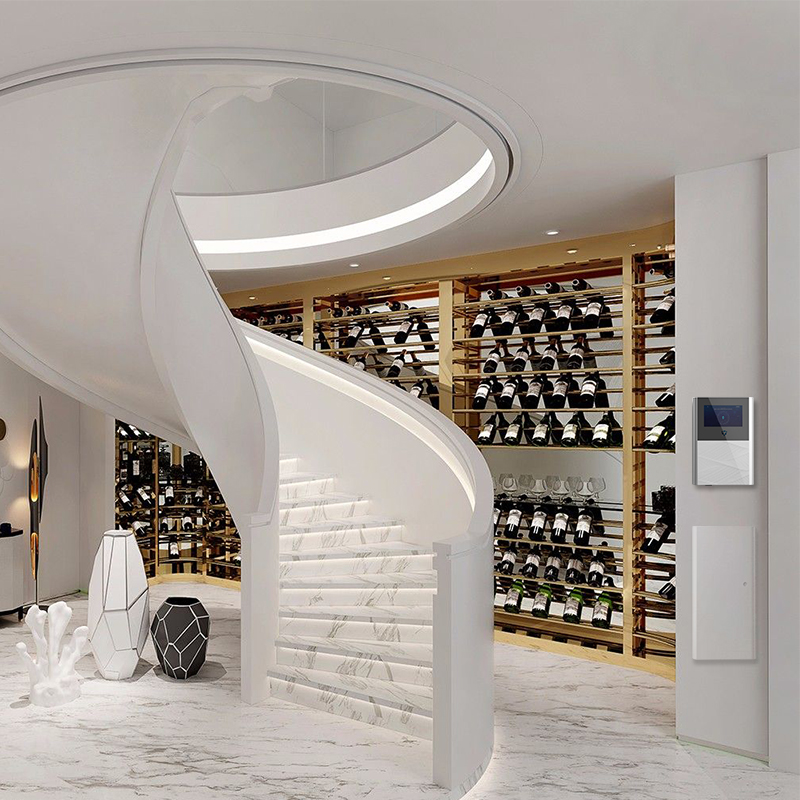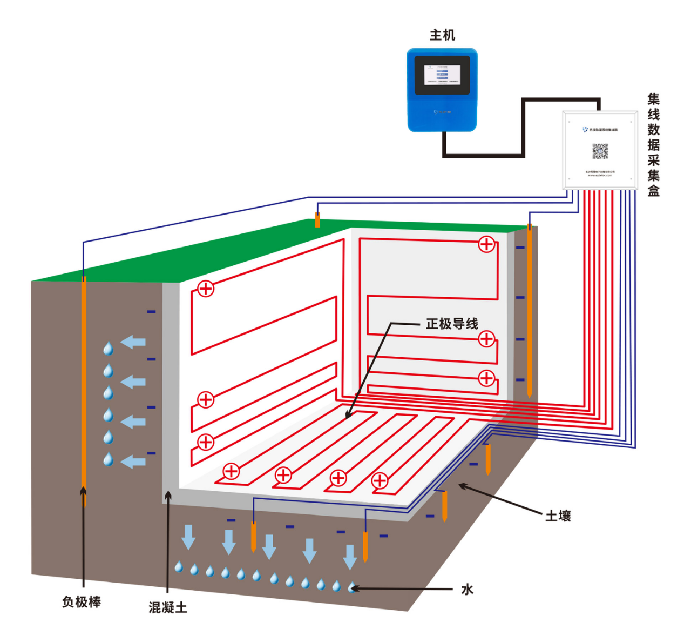As the saying goes: the quality of a wine cellar project, three points of material is the foundation, seven points of construction is the guarantee.
Villa basement due to the long-term air circulation of the particularity, easy to appear leakage moisture phenomenon, so waterproof and moistureproof do well, is the touchstone of the quality of the underground cellar.

How should the underground cellar be waterproof and moistureproof?
01 Cleaning up the grassroots
The surface of the base should be solid and possess adequate strength. It must be thoroughly cleaned to ensure it is free from dirt, sand, and other contaminants. The surface should be smooth without any loose areas. It is necessary to achieve a level and even finish. Any remaining mortar blocks or protrusions should be removed using a trowel knife. In case of any local substandard areas, LM waterproof putty can be used for repair purposes. After the treatment of the base, there should not be any noticeable water presence.
02 Detail Processing
Pile foundation pit, puddles, parts lower than the elevation of the bottom plate, and the joints between the ground and the wall should be painted into an arc with a radius of 20mm. After the location of the pipe roots through the wall, the floor around the floor should be tightly blocked with cement mortar, and the joints around the pipe roots and the ground should be painted into a figure eight with cement mortar. The pipes and connectors through the wall should be installed firmly, the joints should be tight, if there is rust, oil should be cleaned with wire brush, sandpaper, solvent, etc.
03 Electroosmotic pulse + dehumidifier
After doing the above steps, the electroosmotic pulse can be done, which makes the water in the structure penetrate and move from the structure inside and outside the structure, which belongs to active moisture-proof; Dehumidifier is used to remove moisture from the air; Electroosmotic pulse and dehumidifier combined, the effect can be seen at a glance.
Technical principle:

Q tips:
The premise is that only the structure of the wine cellar is qualified, and the installation of the electroosmotic pulse intelligent impermeable dehumidification system (the dehumidifier assists in reducing the indoor air humidity during the plum rain season), the wine cellar is a healthy and dry state.

In addition, there are other conditions and caveats
▲Position:
A good wine cellar needs to meet some basic conditions, such as first, there is enough storage space and activity space. Second, the ventilation performance is good. Third, the environment is easy to keep dry. Fourth, cut off natural light lighting. Fifth, anti-vibration, anti-noise interference. Sixth, there are relative constant temperature conditions. Generally speaking, the place that can meet the above conditions at the same time is the basement, which is why many wine cellars choose the basement.
▲Wall treatment:
For the cellar design, the walls need to be treated in advance, a 2x6 or 2x4 wooden skeleton needs to be installed, some anti-freeze or insulation materials are built in, and the floor in the cold area should also be insulated. The requirements for thermal insulation depend on the external environment of the wine cellar and also on the underground depth of the wine cellar.
▲Pay attention to heat preservation:
In the design of the wine cellar, the door of the wine cellar is also very critical, it should usually have a frame and exhaust holes, if the beauty is not the main standard, the iron door with a thermal insulation layer can also be considered. The main problem is to have exhaust on the door and to have a door bar. The glass door is not insulated, and a large type of refrigeration equipment such as air conditioners is required when selecting.
▲Keep ventilated and dry:
In the design of the wine cellar, it is also very necessary to keep it ventilated and dry. There should be some space around the cellar where the heat can vent out and fresh air can come in. The residual waste gas, waste water and noise of refrigeration equipment can be discharged to the outside. The main considerations of the construction of family wine cellar are: constant temperature, constant humidity, stability, beauty and easy classification.
▲Moderate temperature:
There are many other considerations in the design of the wine cellar, let's take a look. The temperature of the storage of wine is best constant temperature, constant temperature 14-16 degrees Celsius, the ideal temperature for wine maturation. Indoor temperature and natural air flow are critical for wine storage. The humidity standard is basically maintained between 50-70%, which can not be high or low; Proper air humidity will help the cork to maintain a good seal.
▲Indoor light brightness:
Cellar design should also pay attention to the indoor brightness is also a very important factor. Generally, it is necessary to maintain weak light, or natural lighting is best. Try to avoid too strong light or too high heat; Uv and other radiation sources are very harmful to wine and must be avoided. Vibration will affect the slow growth and change process of organic matter in the bottle of wine, and special attention should be paid to those world-class top wineries. It is also recommended to store the wine in a fixed location and not move it frequently.
We focus on accurate long-term design:
Build a self-drying system for the main structure of the house to create a more comfortable and livable indoor and underground space.
There is no doubt that a technology has been invented is great, but it is still too weak to compete for this point of enthusiasm.
Relying on the fear of noise gradually, pushed to the thorn land, is the controversy is not big enough.
When the spotlight is focused, it begins to increase the chance of "being accepted".
-the end-
* We'd like to borrow a lamp from you *
The iteration of technology is the wisdom of scientists,
But for the story line to be more coherent, it needs a public awareness awakening.